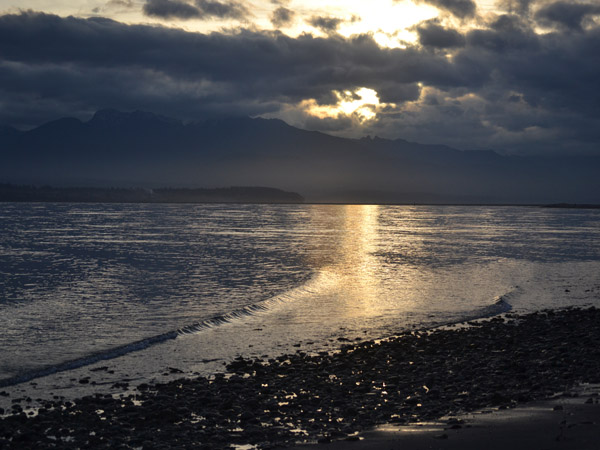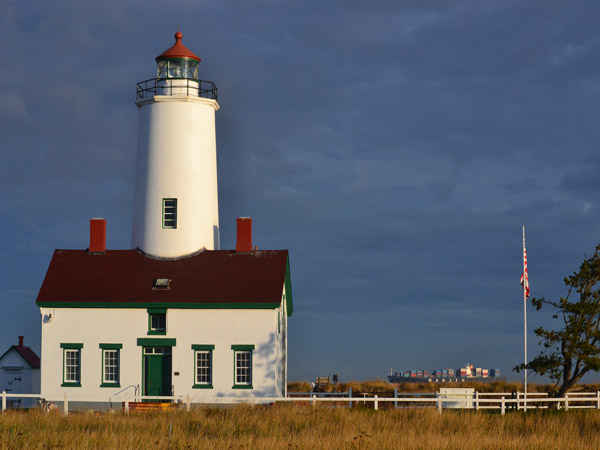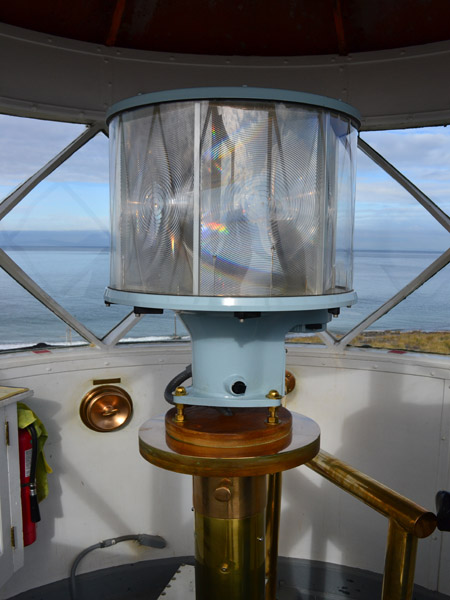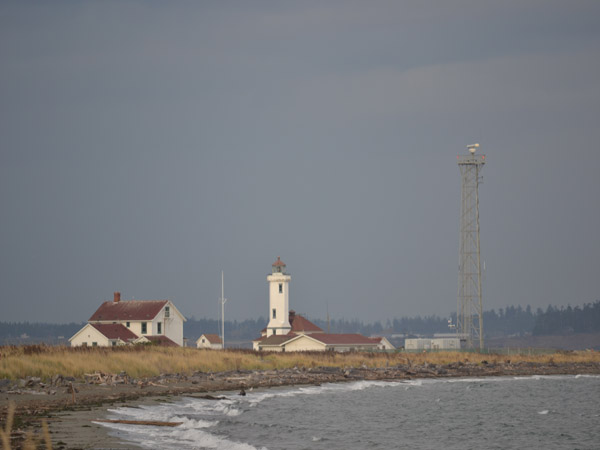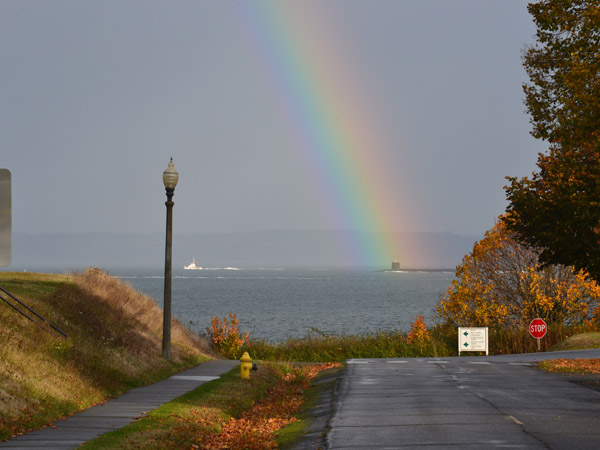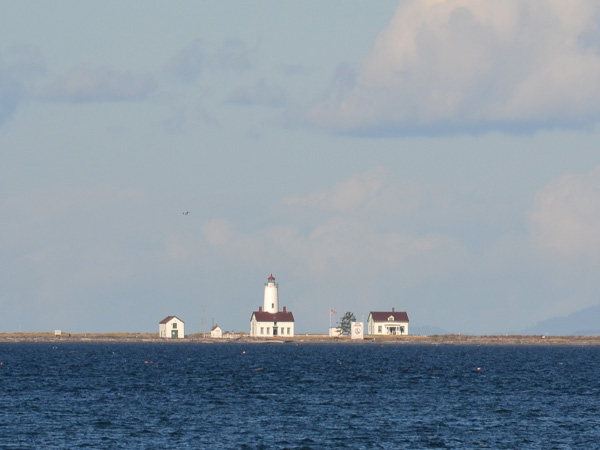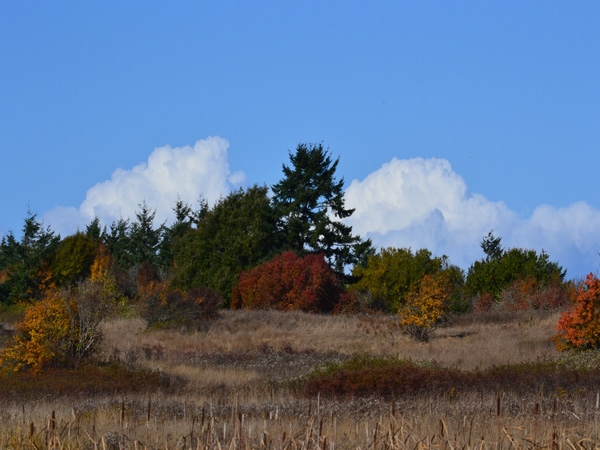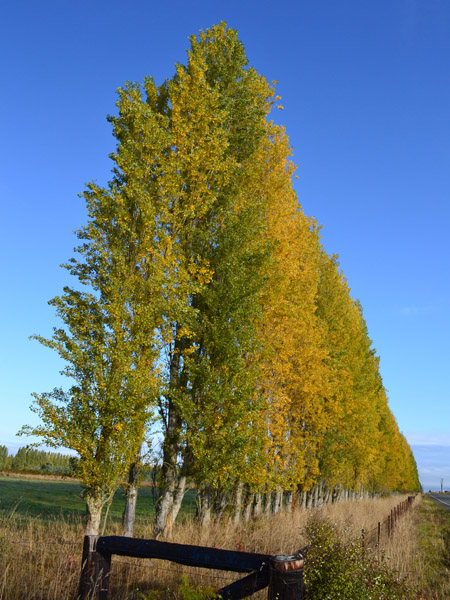A quiet moment on Dungeness Bay.
Category: View
The light
The Strait of Juan de Fuca is a busy shipping channel and the Dungeness Spit is a serious navigational hazard as ships head into and out of Puget Sound and the more northerly straits leading to Canada. The New Dungeness Lighthouse flashes a beam of light that can be seen for 17 miles in clear weather, 12 times a minute and 17,280 times per day.
The lighthouse tower was originally 100 feet tall and the light was fueld by lard oil and magnified by a third order Fresnel lens. The tower was lowered to 63 feet in 1927 because of structural damage. The current light is a rotating six-sided bull’s-eye prism and is completely automated. The U.S. Coast Guard still changes the lights inside while the New Dungeness Light Station Association (NDLSA) maintains the building, grounds, and infrastructure of the Station.
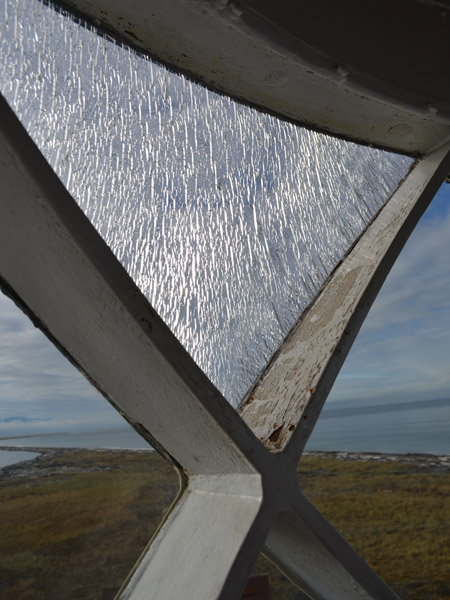
The environment on Dungeness Spit, where the lighthouse is located, is harsh. NDLSA has been replacing the unique, curved windows of the lighthouse. You can see above what time and the elements have done to them. The Association spends about $100,000 a year on upkeep and has a long to-do list. Funds come from keeper stays, donations, and grants. Despite its age, the Light Station remains clean and beautiful. As volunteer keepers we were allowed full access to the light and the exterior catwalk around the light room. Payback? My husband polished all the brass in the room and the stairwell, renewing a relationship with Brasso that he hadn’t had since his Navy days.
Point Wilson Lighthouse
The Point Wilson Lighthouse is located on the grounds of Fort Worden State Park and marks the convergence of the Strait of Juan De Fuca and Admiralty Inlet.
The lighthouse, activated in December, 1879, was originally located on top of the lightkeeper’s house. It was moved to its current position in 1913 when the present structure was completed. The Coast Guard operates the lighthouse. It was automated in 1976 and is closed to the public.
If you’re interested in lighthouses, check back in a few days. I’ve just completed a week’s stay as a “volunteer lighthouse keeper” at the New Dungeness Lighthouse in Sequim and will post pictures and impressions from my visit.
Submarine and rainbow
New Dungeness Lighthouse
The New Dungeness Lighthouse is an important part of local history. It isn’t always in clear view and it’s not easy to get to. It’s at the end of Dungeness Spit, the longest natural sand spit in the U.S. Conquering the spit and exploring the lighthouse means a five mile walk on sand and rock each way, or an approach by water. You can sign up and pay to stay at the lighthouse for a week as a lighthouse keeper. There are chores, like cleaning the public restrooms and watering the lawn, but your rent also includes a roundtrip ride to the lighthouse.
The lighthouse has been in continuous operation since 1857 and provides navigational aid to ships in the Strait of Juan de Fuca. I’ll post more about the New Dungeness Lighthouse in a week or two. Stay tuned!
Fall colors
Four Season Trees
When I took over the Sequim Daily Photo I asked Shannon, the wondrous previous poster, if there were any posts she’d wanted but not had a chance to photograph. She mentioned the trees that border Kitchen-Dick Road and thought it would be interesting to view them with their different seasonal looks. Here’s the first season, Autumn. There are still touches of green; a good frost followed by strong winds and they’ll quickly be bare.
I didn’t do a serious investigation to determine what kinds of trees these are. Husband and neighbor opined they are poplars.
And for those of you who’ve seen the name “Kitchen-Dick” for the first time I understand that it is a combination of two pioneer family names, farmers who lived along this road. Many of the local roads are named for pioneers and descendants still live here.
